Amethyst mines, dinosaur tracks, nature reserves, a suspension bridge over a river, canyon swimming holes, gauchos herding horses—and even a shrine to tango’s greatest icon. Add duty-free shopping, and what’s not to like?
We took in all of these things on a road trip as a party of four—my wife and I, and our Argentine friends Jamie and Mirta. Our seven-day, 1,500-kilometer loop started in Punta del Este, following Ruta 5 north and Ruta 8 south. If you’re starting in Montevideo, the same loop—or a variation along Ruta 3—is just as easy to follow.
The World’s Best Retirement Havens for 2025
The World’s Best Retirement Havens for 2025
20 Countries Compared, Contrasted, Ranked, and Rated. You don’t have to be rich to enjoy a pampered retirement, you just need to know where to go. With our 34th Annual Global Retirement Index, our experts hand you a detailed roadmap. Details—and a Special Offer—Here

By submitting your email address, you will receive a free subscription to IL Postcards and special offers from International Living and our affiliates. You can unsubscribe at any time, and we encourage you to read more about our Privacy Policy.
Into Uruguay Profundo
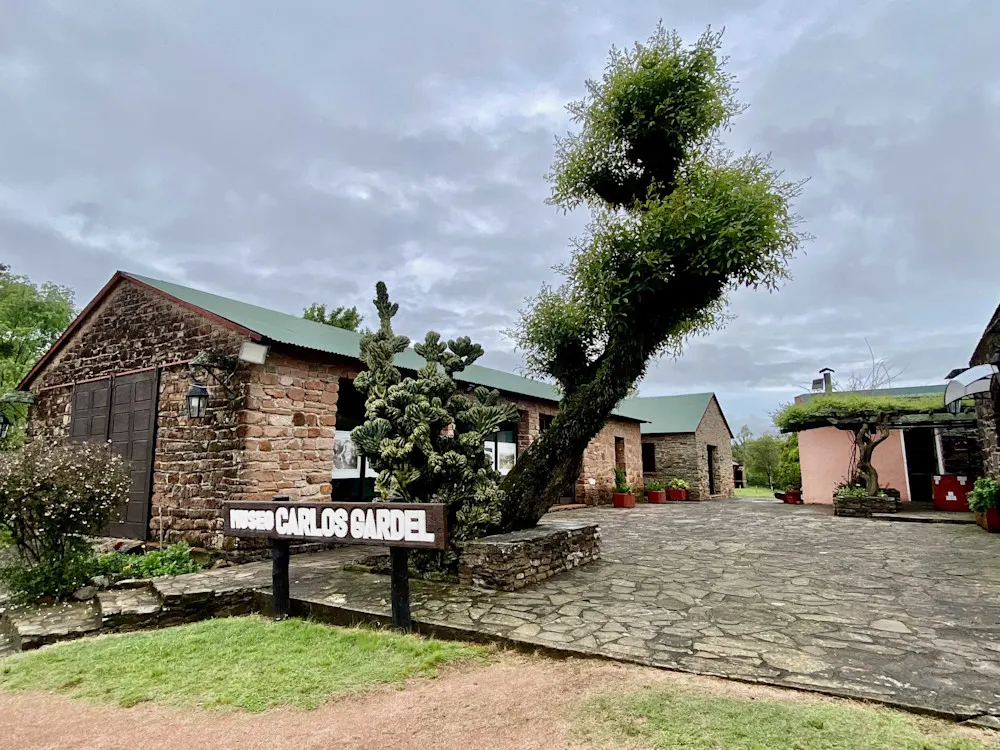
The expatriate community in Uruguay is primarily clustered along the coastline, from Colonia in the west to Punta del Diablo in the east. The largest concentrations are in the greater Montevideo and Punta del Este areas. Beyond the coastal areas is what the locals call Uruguay profundo—deep Uruguay. The farther inland you travel, the fewer expats (and less English) you will encounter. Save for its beaches, though, many of Uruguay’s most beautiful and interesting attractions are in the hinterlands, and allow for great road trips.
Our primary destination was Artigas, the country’s northernmost capital, of the Departamento (State) of the same name. It is nestled along the Rio Quaraí, connected by an international bridge to its sister Brazilian town of Quaraí. Artigas is known for two things: amethyst and duty-free shopping.
After a long day of driving, we spent the first night in Tacuarembó, the capital of the department by the same name. The next morning, we made the 25-kilometer detour over to the appropriately named Valle Edén. The village sits in a lush valley, and you enter by driving over a dam often slick with flowing water. When water levels are high, the only way in and out is via a swaying pedestrian suspension bridge, which is fun to cross.
The main attraction in Valle Edén is the Museo Carlos Gardel, a shrine to the legendary tango singer, composer, and actor who died in a plane crash in 1935 at age 44. Gardel’s music plays softly as visitors explore exhibits chronicling his life.
Argentina, Uruguay, and France all claim him as a native son. Famously evasive about his origins, Gardel once quipped, “I was born in Buenos Aires at the age of three.” Most agree he was the child of a young, unwed mother—either in France or Uruguay—and obscured the truth to avoid stigma. Uruguayans believe he was born on a ranch near Valle Edén, the illegitimate son of a wealthy local landowner. His 1915 performance at the Teatro Uki in nearby Tacuarembó is seen by supporters of this theory as a symbolic homecoming.
Artigas: Amethyst Mines and Cross-Border Surprises

We spent two nights in Artigas, staying at the Hotel Casino San Eugenio del Cuareim. This hotel serves as the base for the region’s most popular amethyst experience—the Safari Minero (Mineral Safari) mine tour.
Amethyst, a violet-to-deep-purple variety of quartz, owes its color to trace impurities like iron. According to local lore, the area’s mineral riches were discovered in the 1860s when someone used a rock as a wheel chock, and it split open to reveal a crystal-lined geode.
The tour lasts about four hours and departs by bus from the hotel. While you can drive yourself, getting to the mine means navigating a long, rough gravel road. Tour details—including price—depend on the number of guests, who share the cost of transportation, the driver, and the guide. Tours are typically in Spanish, so if you want a bilingual experience, be sure to ask in advance. Our group had about a dozen people on the bus, with a few others following in their own car. Fortunately, our guide was bilingual. We paid 1,960 pesos per person—about US$46.
How Uruguay’s Amethyst is Mined and Processed
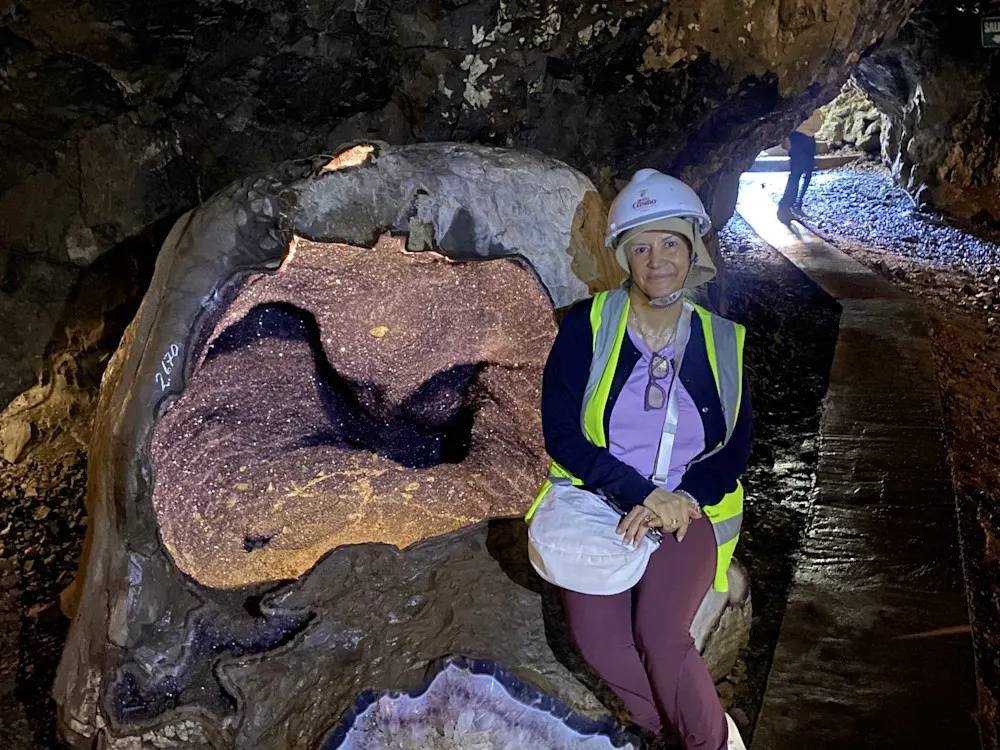
The first stop was a large workshop where geodes are processed. Workers keep uncut amethyst in the shade—direct sunlight can fade the purple color completely in as little as six months.
Mining involves blasting through hard basalt to reach geodes, many of which crack open during extraction. Once retrieved, the geodes are examined and cut to highlight their most attractive features. Workers trim away excess rock, polish edges, and sometimes attach custom-made metal stands. Each piece is unique.
The workshop also features a sizable showroom where visitors can buy amethyst pieces ranging from a few dollars to tens of thousands.
We visited several mining areas in different stages of development. Inactive mines and rubble piles—called talus slopes—dot the landscape. At one site, the guide explained that each mine shaft is assigned to a single worker, who receives a fixed salary and bonuses based on their output.
Miners dig through the Arapey Formation, a Cretaceous-era basalt layer about 132 million years old. It stretches over 40,000 square kilometers across northwestern Uruguay and into Brazil. Geodes formed in the gas bubbles left in the lava as it cooled.
A restaurant inside the mine serves large groups by special arrangement. It’s not part of the standard tour, since food and staff must be transported in from Artigas—an hour away.
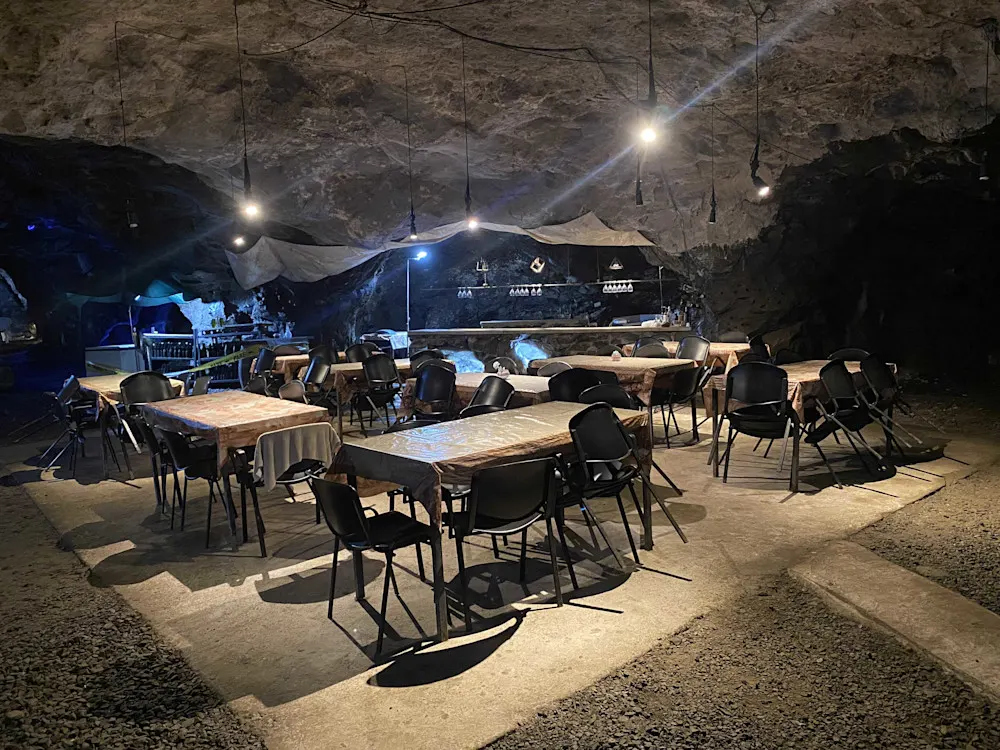
Agates, Quartz & More: The Gemstone Landscape
Amethyst isn’t the only treasure pulled from the basalt. Miners also unearth quartz geodes and agate—both considered by-products that wouldn’t be profitable to extract on their own. Agate often coats the inside of geodes, and many specimens contain a blend of amethyst, quartz, calcite, or other crystals.
While Brazil produces more amethyst by volume, Uruguay is renowned for its superior quality. The deeper and more vibrant the purple color, and the larger and clearer the crystals, the higher the value. Chinese buyers, who account for about 80% of Uruguay’s exports, prize amethyst for its healing energy and Feng Shui appeal. Western collectors, on the other hand, tend to seek out unusual specimens that combine multiple crystal types or boast distinctive formations.
Where to Buy Amethyst in Uruguay
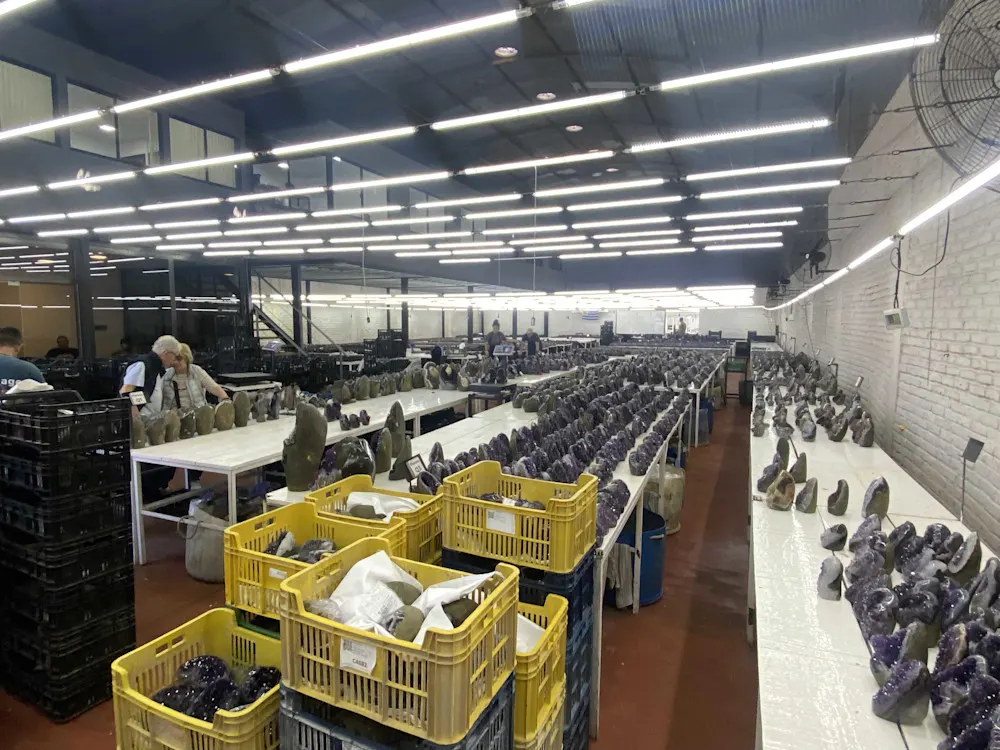
Beyond the workshop visited during the Safari Minero tour, the best place to see—and buy—amethyst is Le Stage Minerals, located on the outskirts of Artigas.
Inside, a massive showroom the size of a basketball court is filled with tables of sorted geodes and minerals. Prices vary by quality and are often listed per kilogram. Unique, museum-worthy pieces are individually priced.
Buyers from China frequent the showroom, purchasing in bulk. A second-generation Taiwanese-Uruguayan employee, fluent in Mandarin, was assisting them when we visited. He seemed impressed when I said, “Wǒ bù huì shuō Zhōngguóhuà” (“I don’t speak Chinese”).
We couldn’t leave Artigas without buying a few pieces. For US$30, we picked up a small, deep-purple geode, perfect as a paperweight. A larger specimen cost us $60, and we also splurged on a unique piece for $170.
Why You Won’t Find Jewelry in Artigas
Surprisingly, amethyst jewelry is almost non-existent in Artigas. Gemstone cutting skills have not been developed in the north of Uruguay, so jewelry-quality stones get exported in the rough. One small German gemstone-cutting town called Idar-Oberstein has had a multi-generational relationship with Artigas, turning its amethyst crystals into fine jewelry that finds its way into the world market rather than returning to Artigas’ retail stores.
One of the best places in Uruguay to buy inexpensive amethyst jewelry, as well as geodes and other minerals and rocks, is at the open-air “Lian by Piedras” store along the highway in Punta Ballena, Punta del Este’s smaller neighboring town. They are open most weekends and more frequently during the heavier tourist seasons, but they will open for you if you call ahead of time.
Duty-Free Shopping on the Uruguay-Brazil Border
Artigas also offers a unique bonus: cross-border and duty-free shopping. On the Uruguay side of the Rio Quaraí, a string of duty-free shops line the streets, open to shoppers from both countries. Unlike what you might expect, these zones aren’t limited to perfume and whiskey. You’ll find electronics, housewares, sporting goods, appliances, and even luxury items—often for far less than elsewhere in Uruguay.
At the better-known border town of Chuy (on the Atlantic coast), a customs checkpoint sits about two kilometers inland—but it’s often informal. The actual border runs down the middle of the boulevard separating Chuy, Uruguay, from Chuí, Brazil. A simple U-turn takes you across.
The Artigas-Quaraí crossing is even more relaxed. We entered Brazil with no one manning the checkpoint, and upon our return, the Uruguayan agents simply waved us through. Locals suggest avoiding weekends and the end of the month (when people get paid), as traffic on the bridge can slow to a crawl.
These duty-free zones were created to boost local economies in Uruguay’s border towns. And if you’re heading back into Uruguay after shopping in Artigas, you’ll encounter no customs checks—since the checkpoint is positioned for inbound traffic from Brazil.
Prices can be dramatically lower than elsewhere. We saw 500ml cans of imported Portuguese beer for just $0.90—compared to $2.40 for domestic beers in most of Uruguay.
Why Expats Cross into Brazil for Bargains
Shopping in Quaraí (and other Brazilian border towns) isn’t technically “duty-free,” but re-entry into Uruguay carries no duties on clearly personal purchases. And the savings are real. Groceries, clothing, and household items are notably cheaper in Brazil.
A half-kilo box of dark roast Brazilian coffee was selling for 19.90 Brazilian reals (about $3.50)—versus 566 pesos (around $13.45) for the same brand in Punta del Este. Coffee filters priced at $0.93 in Brazil cost $3.50 just across the river. Even filling your gas tank is a bargain—fuel in Brazil is about half the price of Uruguay.
The World’s Best Retirement Havens for 2025
The World’s Best Retirement Havens for 2025
20 Countries Compared, Contrasted, Ranked, and Rated. You don’t have to be rich to enjoy a pampered retirement, you just need to know where to go. With our 34th Annual Global Retirement Index, our experts hand you a detailed roadmap. Details—and a Special Offer—Here

By submitting your email address, you will receive a free subscription to IL Postcards and special offers from International Living and our affiliates. You can unsubscribe at any time, and we encourage you to read more about our Privacy Policy.
From Border Towns to Valley Retreats
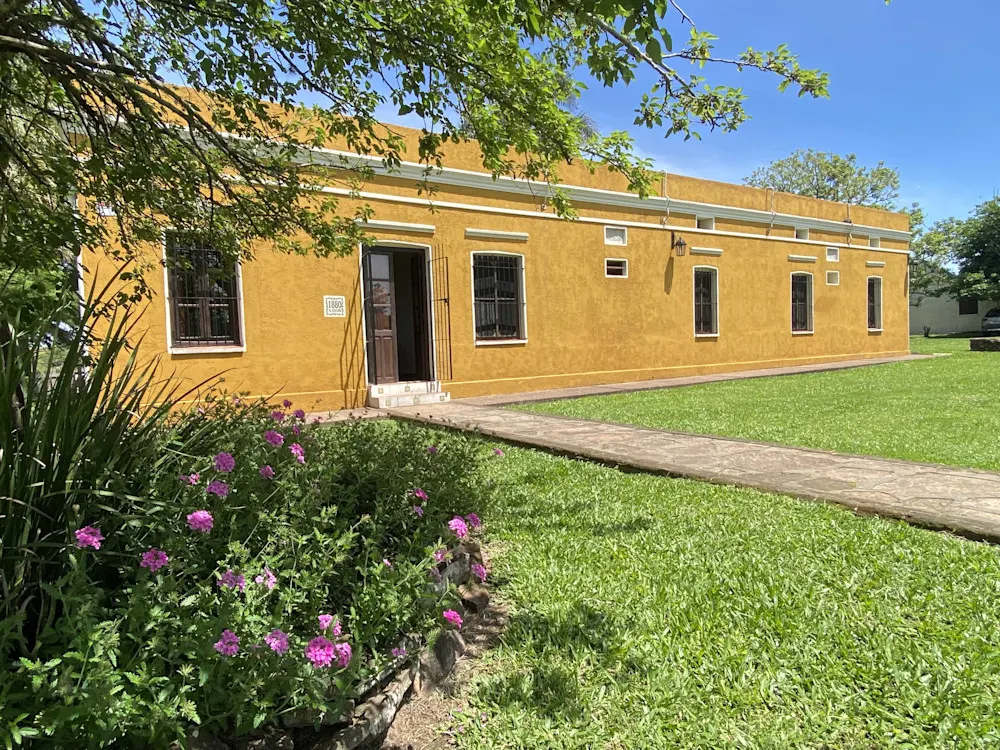
Leaving Artigas, we retraced part of our route south toward Valle del Lunarejo—a stunning 25,000-hectare protected area of rare ecosystems. Unlike national parks, most of the land is privately owned, meaning access to streams and hilltop hikes typically requires joining guided tours arranged through local accommodations. Options range from rugged hikes to relaxing birdwatching outings.
Lunarejo translates roughly as “freckle,” named for an Appaloosa horse once raised in the valley. We stayed at Posada Lunarejo, a charming five-room inn in a restored colonial-style building from 1881, just two kilometers off the highway.
Among the available activities: a four-hour tour by 4x4 open truck to a canyon and swimming hole. The truck costs 10,000 pesos (about US$240) total—our group of 12 paid less than $20 each. Other options include horseback riding and hikes.
The valley is rich in birdlife, including large flightless ñandúes and nesting storks in nearby wetlands. A short walk from the posada leads to a birdwatching blind overlooking a pond, where storks feed their young.
After our too-short stay, we drove to Treinta y Tres—our one encounter with rough roads. Ruta 8 was closed, and Ruta 7 offered hours of gravel and potholes.
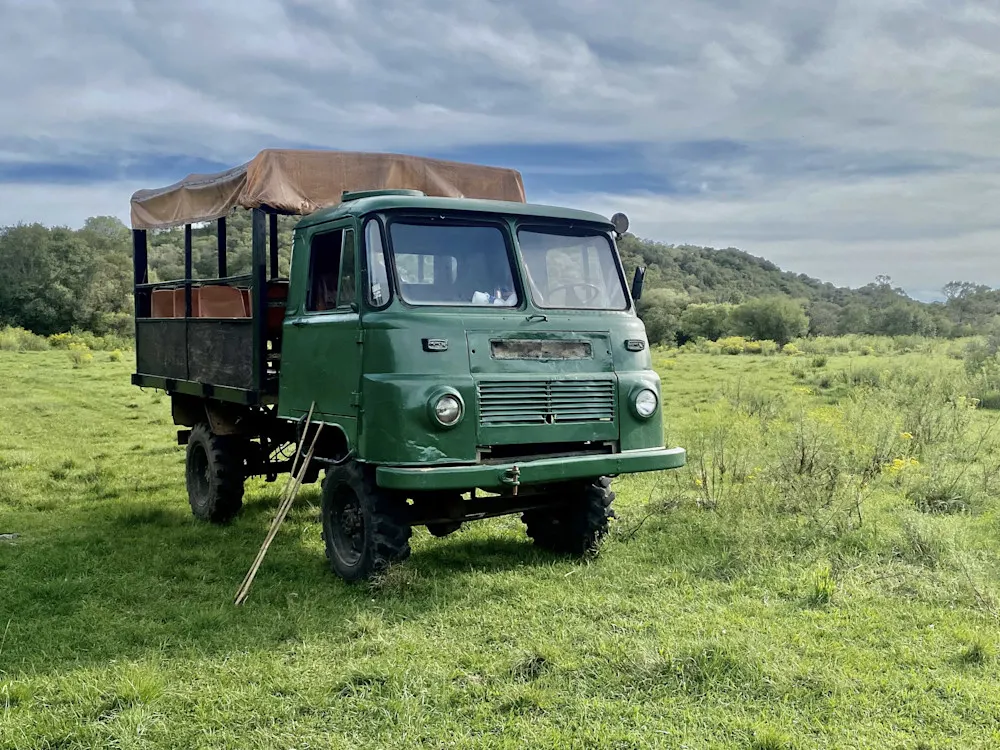
A highlight en route was Ruta de los Dinosaurios, about 30 kilometers east of Tacuarembó. Under a large shed, you can view two sets of preserved tracks in sedimentary rock from 100–150 million years ago. One set belongs to a newly identified sauropod species, Udelartitan celeste. The other to a yet-unidentified theropod, resembling a velociraptor. The site is open 24/7 and lit at night.
After a night in Treinta y Tres, our final stop was Quebrada de los Cuervos—Canyon of the Crows—named for the three species of vultures that nest there. The park offers a short 500-meter lookout walk and a more demanding three-hour loop trail into the ravine. It’s the deepest canyon in Uruguay.
Wildlife is plentiful, though limited park hours (8 a.m.–6 p.m.) mean missing the dawn and dusk activity. The 25-kilometer gravel road to the park is best tackled in daylight anyway. Among the notable flora is the plumerillo rojo tree, with flowers resembling red feather dusters.
Driving back to Punta del Este, we passed through Aiguá—a lovely town whose name means “running water” in Guaraní. With its beautifully restored colonial-style buildings, it’s worth a trip of its own.
Why Uruguay’s Interior is Worth Exploring
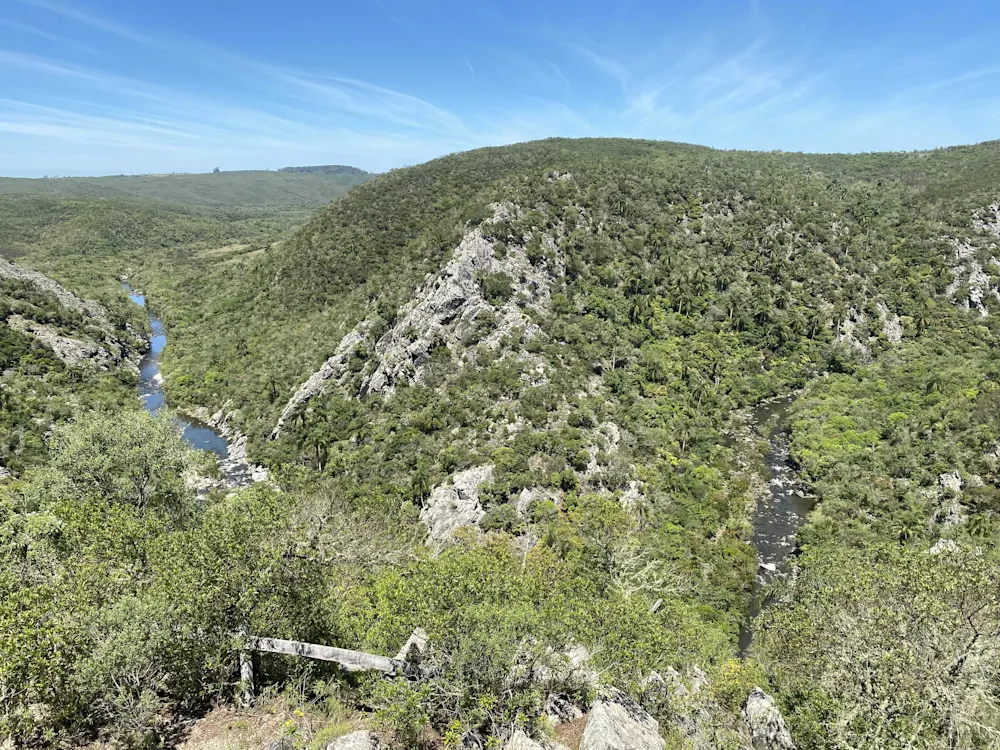
Most expats in Uruguay settle in the cities and coastal towns, where modern amenities and a community of fellow foreigners are close at hand. Some choose chacras—small farms just outside these centers—offering tranquil country life with easy access to shops, services, and culture.
Only the most independent expats might consider living in Uruguay’s remote northern regions. As beautiful and affordable as they are, adapting to the language and rural lifestyle can be challenging despite the genuine warmth of locals.
But for everyone—from coastal city dwellers to seasoned adventurers—the interior’s rolling hills and lesser-known treasures enrich life in Uruguay. This compact paisito (“little country”) is tailor-made for getaways: day trips, weekend escapes, and multi-day journeys. Time them right and you might stumble upon one of the small-town festivals held year-round.
Our recent trip was a perfect example of what Uruguay’s interior has to offer—geological wonders, rare ecosystems, and glimpses of both tango and gaucho culture. With more time, we could have explored wineries, oddball museums, historic sites, and local curiosities. We’re already planning the next adventure into Uruguay profundo… and the many hidden sights still waiting to be discovered.
The World’s Best Retirement Havens for 2025
The World’s Best Retirement Havens for 2025
20 Countries Compared, Contrasted, Ranked, and Rated. You don’t have to be rich to enjoy a pampered retirement, you just need to know where to go. With our 34th Annual Global Retirement Index, our experts hand you a detailed roadmap. Details—and a Special Offer—Here

By submitting your email address, you will receive a free subscription to IL Postcards and special offers from International Living and our affiliates. You can unsubscribe at any time, and we encourage you to read more about our Privacy Policy.
